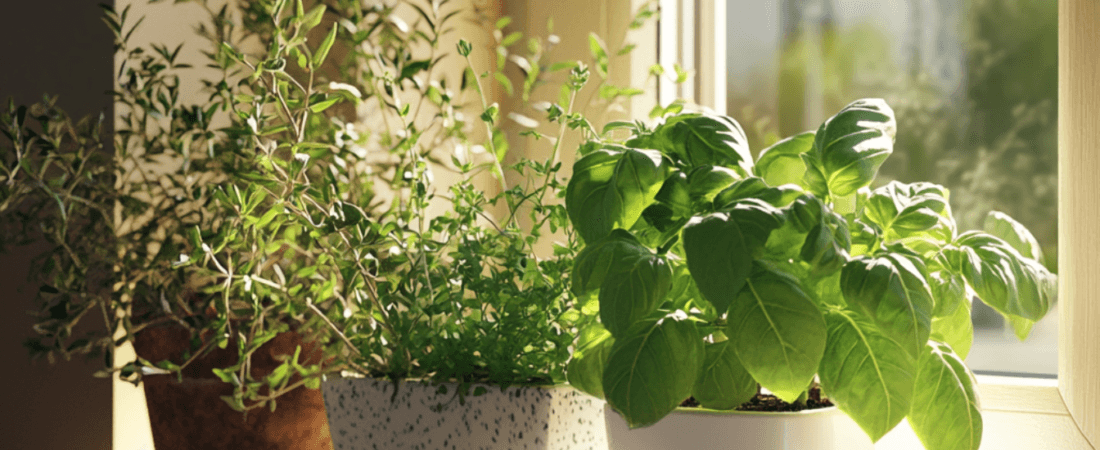Why Grow Herbs at Home?
Starting your own herb garden at home is not only rewarding but also incredibly convenient. Fresh herbs can elevate your cooking and enhance your meals, providing flavors that dried herbs simply can’t match. Plus, growing herbs in small spaces brings nature closer to you while promoting a sense of satisfaction. Even if you live in a tiny apartment or have minimal outdoor space, you can successfully grow a variety of herbs.
Best Herbs for Limited Spaces
1. Basil
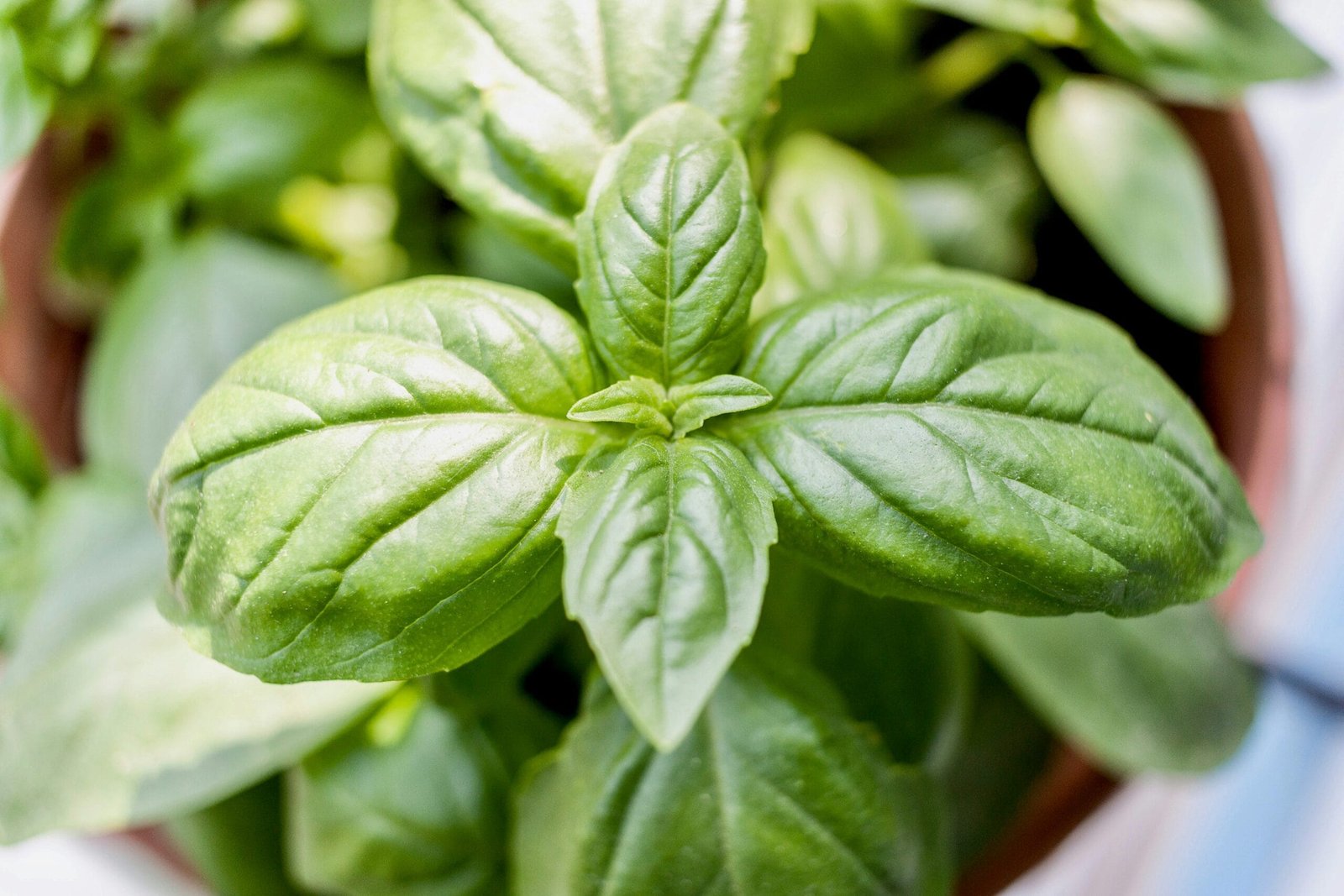
Basil, known for its aromatic leaves, is perfect for windowsills. It requires minimal care, thrives in pots, and can be used in sauces and salads.
Light: Basil thrives in bright, indirect sunlight. Aim for 6–8 hours of light per day. A south-facing window is ideal.
Water: Basil prefers consistently moist soil, but it shouldn’t be waterlogged. Water when the top inch of the soil feels dry.
Fertilizer: Use a balanced liquid fertilizer every 4-6 weeks.
Cooking Tip: Fresh basil is a must-have for Italian cooking! Add it to pasta sauces, pesto, salads, or as a topping for pizza and sandwiches. It pairs beautifully with tomatoes, garlic, and cheese.
2. Mint
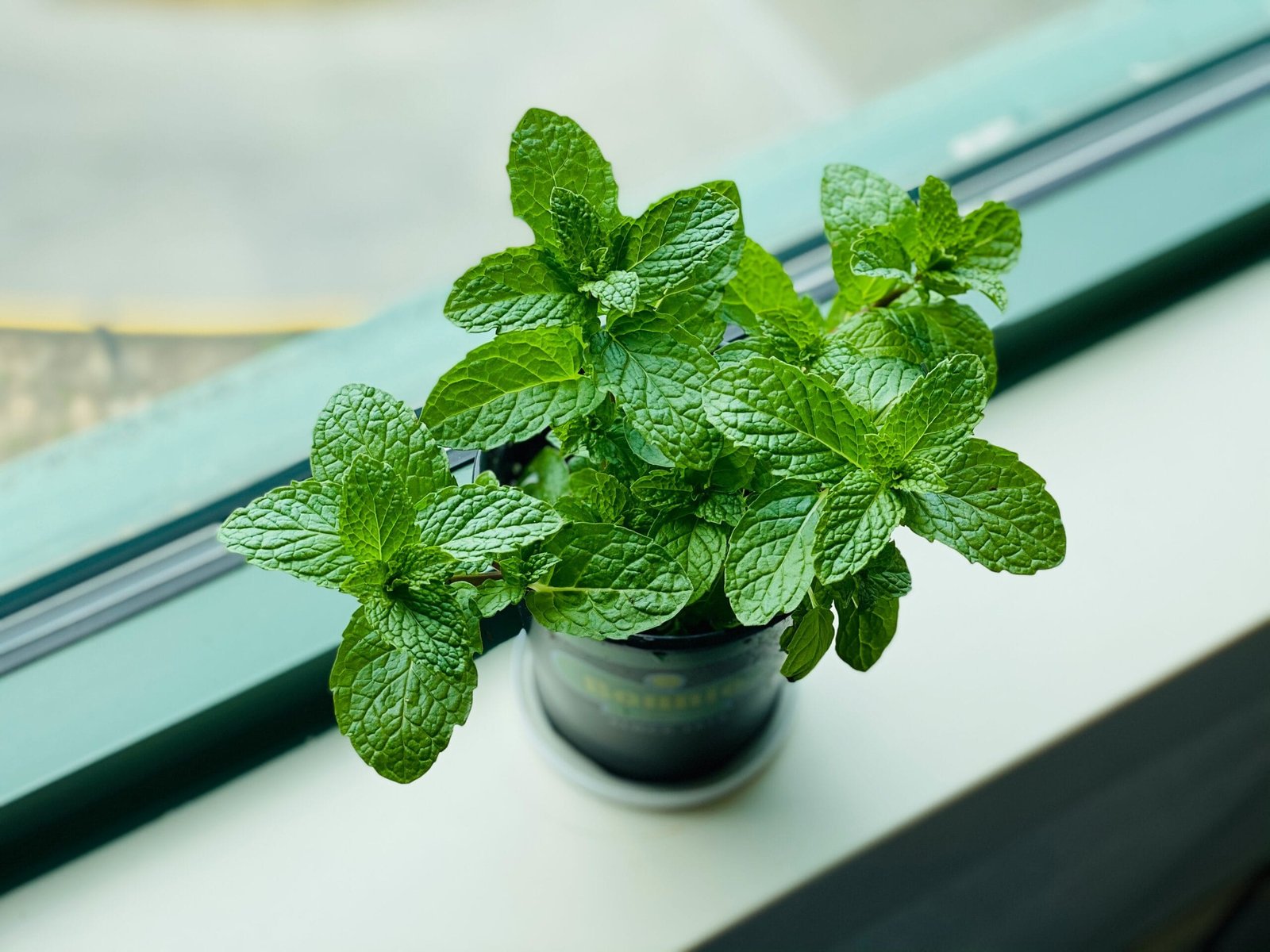
Mint is another excellent choice. This hardy herb grows well in containers and can flourish in just about any light condition. Its refreshing flavor enhances drinks and dishes, making it a favorite for many.
Light: Mint does well in partial sunlight or bright, indirect light. It doesn’t need as much light as some other herbs, making it an excellent choice for areas with less direct sun.
Water: Keep the soil moist but not soggy. Mint likes more water than some herbs, but be cautious of overwatering.
Fertilizer: Mint is not a heavy feeder, so fertilize lightly once a month with a general-purpose fertilizer.
Cooking Tip: Mint adds a refreshing touch to dishes like tabbouleh, fruit salads, or lamb. You can also use it to flavor teas, cocktails (think mojitos!), or yogurt-based dips.
Bonus Tip: We sometimes personally eat mint leaves as substitute for gum. Not only does it freshens your breath but the added vitamins and nutrients is an added bonus!
3. Chives

If you’re looking for a versatile herb to grow, consider chives. They take up little space and can easily be snipped directly into your meals, adding a mild onion flavor without overwhelming the dish. The best part? Once you plant them, they keep coming back!
Light: Chives prefer full sun but can also tolerate partial sun. Aim for at least 4-6 hours of sunlight per day.
Water: Water regularly, but ensure the soil has good drainage. Let the top inch of soil dry out between waterings.
Fertilizer: Feed your chives with a balanced fertilizer every 6-8 weeks.
Cooking Tip: Chives are the perfect garnish for baked potatoes, scrambled eggs, or salads. They also work well in dips, soups, and as a finishing touch on savory dishes.
4. Green onions
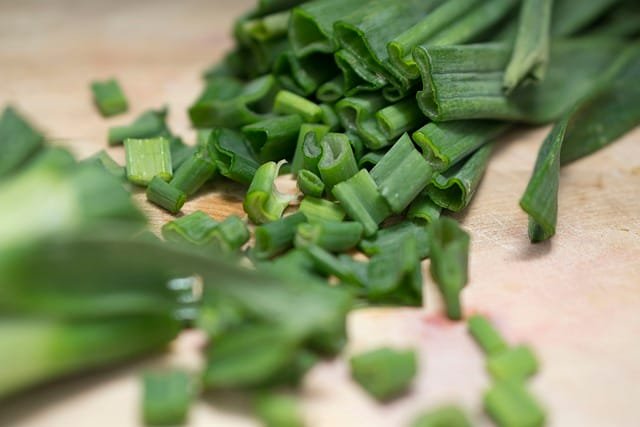
Known for its ease of growing indoors, green onions can be a great plant to grow indoors. While technically not an herb, it is a simple way to provide a fresh touch of subtle onion flavor.
Light: Green onions need bright, indirect sunlight for at least 6 hours a day. They thrive near a sunny window.
Water: Keep the soil consistently moist. Green onions do well with regular watering, especially when they’re in their early growth stages.
As a temporary alternative to soil, green onions can be kept in a jar of water. When using such a method, remember to replace the water every day or two, or else the roots may grow bacteria and lead to root rot.
Fertilizer: A light feeding with a balanced fertilizer every 4-6 weeks will keep green onions healthy.
Cooking Tip: Green onions add a mild, fresh flavor to stir-fries, soups, and salads. They can also be used as a garnish for savory dishes like tacos, omelets, or even baked potatoes.
Bonus Tip: if you ever purchase green onions at the store, you can actually regrow them several times!
5. Rosemary
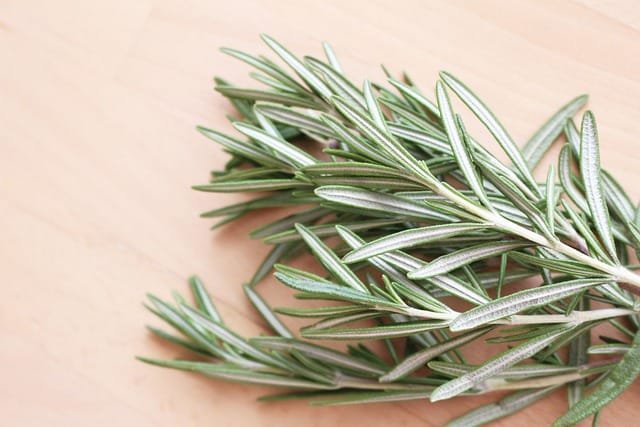
Rosemary is a hardy, low-maintenance plant that thrives in indoor spaces with plenty of sunlight, making it an ideal addition to any home. Its fragrant, evergreen leaves not only add beauty and a lovely aroma to your space but also imparts a robust pine-like flavor and warm notes to your dishes!
Light: Rosemary loves full sun. Place it near a south- or west-facing window where it can get at least 6-8 hours of direct sunlight.
Water: Allow the top layer of soil to dry out before watering. Rosemary is drought-tolerant, so avoid overwatering, which can lead to root rot.
Fertilizer: Rosemary does well with occasional feeding. Use a liquid fertilizer every 4-6 weeks during the growing season.
Cooking Tip: Rosemary is perfect for roasting meats, vegetables, and potatoes. It’s also great in breads, focaccia, or mixed into savory sauces.
6. Thyme
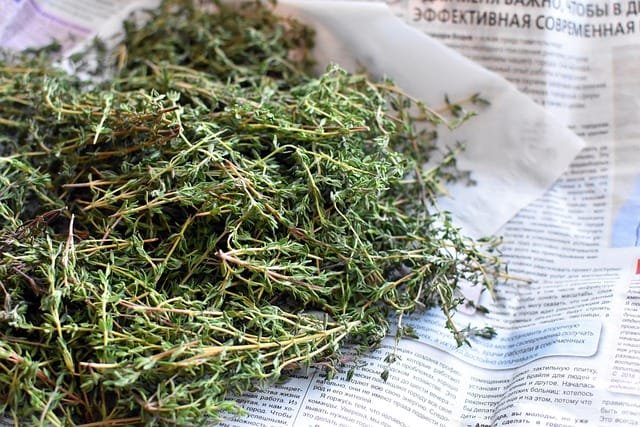
Thyme is an ideal plant for indoor spaces due to its compact size and ability to thrive in bright, indirect light with minimal care. Its earthy, slightly floral flavor enhances a variety of dishes, adding depth to soups, stews, roasted meats, and vegetables, while its fresh leaves can also be used to elevate sauces and marinades.
Light: Thyme thrives in full sunlight, so place it in a location that gets at least 6 hours of direct light each day.
Water: Water thyme when the top inch of soil is dry. Be careful not to overwater, as thyme prefers drier conditions than many herbs.
Fertilizer: Thyme doesn’t need much fertilizer. Feed it with a balanced liquid fertilizer once every 6-8 weeks.
Cooking Tip: Thyme is a must-have for savory dishes like soups, stews, and roasted meats. It pairs wonderfully with chicken, lamb, and vegetables. We personally enjoy using thyme when searing a steak as it adds a really nice flavor.
Space-Saving Tips for Indoor Herb Gardens
When growing herbs indoors, space is often at a premium. Here are some tips to maximize your space and ensure your herbs thrive:
Use Small Pots: Choose compact containers that suit the size of the herbs. You can even grow multiple herbs in one pot, but make sure they have enough room for roots to grow.
Window Boxes: If you have a sunny windowsill, consider using window boxes or hanging planters to keep your herbs within easy reach.
Vertical Gardening: Use tiered plant stands or wall-mounted planters to grow your herbs vertically, saving valuable countertop or floor space.
Hydroponic Growing Systems: If you’re tight on space, try a hydroponic system. These systems don’t require soil and can be set up on a small shelf or countertop.
Indoor Herb Gardening Conclusions
Growing herbs indoors is a fun and easy way to add fresh flavors to your cooking while saving space. With just a little care and attention, your indoor herb garden can provide you with endless culinary possibilities, all year round. Whether you’re a seasoned chef or a beginner, herbs like basil, mint, chives, green onions, rosemary, and thyme can easily be grown in small spaces and elevate your everyday meals. And remember, regularly trimming your herbs not only promotes growth but ensures you have fresh sprigs at your disposal!
In conclusion, growing herbs at home is a delightful way to enrich your cooking experience and enjoy gardening, even in limited spaces. So, gather your pots, pick your favorite herbs, and start growing!
Disclaimer: Gardening advice on this site is shared for educational and recreational purposes only. Local climate, soil, and environmental factors can affect outcomes. Please research region-specific practices and consult gardening experts for personalized advice.

